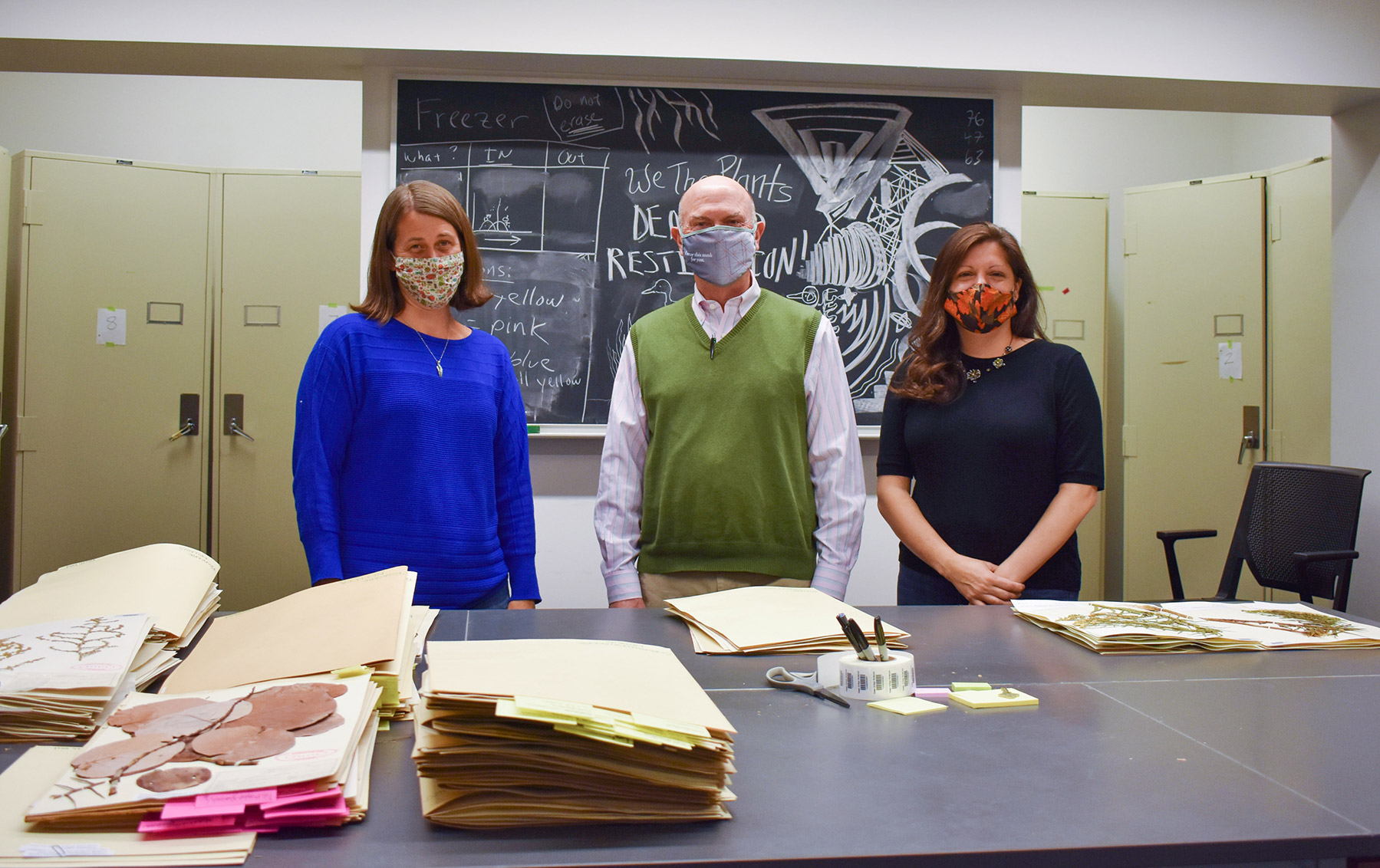NSF Grant Will Help Vassar Share Botanical Data
NSF Grant Will Help Vassar Share Botanical Data
Herbaria, catalogued collections of pressed and dried plant specimens, enable scientists to learn about ecosystems of the past. But the data on where and when the plants lived and died can also provide vital insights about the future. Thanks to a grant from the National Science Foundation, the clues contained in these collections at Vassar and other nearby institutions will soon be available to researchers worldwide.
The $48,904 grant will fund the digitizing of Vassar’s herbarium and collections housed at five other nearby institutions. Vassar students and staff will partner with the New England Vascular Plant Network to make data on more than 22,250 specimens available online in the Vassar College Digital Archive. Others participating in the project are the Louis Calder Center of Fordham University in New York City, the Highstead Arboretum in Redding CT, the Edmund Niles Huyck Preserve in suburban Albany, the Mohonk Preserve in New Paltz, and Pace University in Westchester County. All six are members of the Hudson Valley Environmental Monitoring and Management Alliance (EMMA).

Professor of Biology Mark Schlessman secured the grant along with Vassar Ecological Preserve Manager Keri Van Camp and Nicole Scalessa, Head of Digital Scholarship and Technology. Van Camp will coordinate protocols involving the collaboration with the other herbaria taking part in the project and will participate in publicizing the work. Scalessa will manage the library’s role in creating the digitized information as it is gathered.
Schlessman said the two-year project would make the data currently stored in these herbaria available to anyone conducting research on changes in the ecosystem. “If Vassar has specimens of a species that bloomed in April or May 100 years ago, and now the same species is blooming in March, that tells you something about the changing climate—that spring is coming earlier and earlier,” he said. “These images and the data that accompany them will help EMMA address urgent threats to the health of the ecosystem in the Hudson Valley—not just about climate change but also about invasive species, habitat loss, and other issues that need to be addressed.”

Students enrolled in “intensive” courses that Schlessman will teach over the next four semesters, as well as students selected for the Undergraduate Research Summer Institute (URSI) in 2021, will take part in the project, Schlessman said.
This semester, six students—Frances Cornwall ’21, Doruk Evcim ’22, Ada King ’23, Jack Mahoney ’22, Lila Malin ’21, and Hannah Stouter ’21 are cataloguing specimens with bar codes, updating scientific names, and taking digital images. Next summer, Biology Technician Taylor Conte and an URSI student will travel to other herbaria to barcode and image their specimens, Schlessman said.
“While these students are helping us get this project done,” he said, “we are also educating them about the significance of herbaria and how information from a herbarium can help us address major societal concerns such as climate change.”